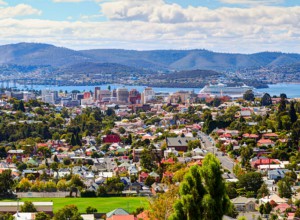It’s a case of ‘buyer beware’ in Tasmania as the state's booming housing market heads for a slow deceleration.
Despite stronger prices than ever, feedback by agents to the Real Estate Institute of Tasmania (REIT) is that fewer people are attending open homes and there are fewer inquiries on listings.
While the outlook has been good for the short term, and currently there is still strong activity, there is a risk associated with the Tasmanian property market and buyers should do their research before proceeding.
Significant improvement to employment conditions, low supply of dwellings, low median prices, a tighter rental market and strong rental returns have seen Tasmania deliver solid capital growth, particularly for houses with good access to the CBD and especially in 2017.
Things have certainly been good, however, the market has started to show some decelerated price growth and there has been a marked reduction in enquiries.
It must be noted too that investors can amplify or weaken market activity.
This was evidenced in Sydney when activity increased to 55.4 per cent in March 2015 and we saw price growth of 14.5 per cent.
However, in September 2012 when investor activity decreased to 42.5 per cent, the slowdown in the market led to only 1.5 per cent price growth.”
CoreLogic’s latest figures show dwelling values in Hobart increased by 12.7 per cent over the past 12 months.
They also show Hobart had the strongest capital gains trend amongst the capital cities with dwelling values rising a further 2.3 per cent over the past three months.
However, while housing market trends remained positive, the quarterly pace eased relative to the March quarter when values were up 3.4 per cent.
One factor influencing the market was that Tasmania was less affordable than five of the states and territories (in price-to-income ratio) terms.
This means that while the median house price in Hobart is only $425,000, dwellings in Tasmania are less affordable in terms of price-to-income ratio than all states and territories, except SA, NSW and Victoria, due to the low annual household income.
A significant increase in dwelling prices in recent years, less affordable housing, decelerated price growth, fewer people turning up to open home inspections and fewer inquiries on listings, indicate that housing affordability has an impact on dwelling prices and that the current growth rate is unsustainable.
The economic growth in Tasmania was the second lowest in Australia, after Western Australia, and the lowest median weekly wage and wage growth.
While there has been significant improvement in the Tasmanian labour market, the unemployment at 6.3 per cent is the second highest in Australia.
In addition, the annual median income is only $57,200 per household, the lowest in Australia.
This means, that a large proportion of the jobs are low salary ones.
The annual salary growth is also the lowest in the country.
With Tasmania only having 210,000 dwellings statewide, housing affordability was an issue high on the agenda of the Liberal Government.
It has promised to spend $125 million over five years on more affordable housing, stamp duty cuts for first-home buyers, a $20,000 first-home builders grant, tax relief for downsizing retirees and three-year land tax breaks for properties being rented out.
Any major government policy to increase housing supply to address the issue of housing prices, could have a strong adverse impact on the property market, in the medium to long-term, particularly on units.
Houses enjoy far stronger demand from owner-occupiers and are held for a longer period of time, particularly in Hobart, where the average is 10.1 years, as opposed to units that are held for an average of 9.0 years.
The unit market is mainly driven by investors, of which intra-state buyers make up a relatively high proportion, and if there are better opportunities in, say, Melbourne, Sydney or Brisbane, there could be a huge shift, and this could have a significant impact on the market.
Tasmania is an extremely small market which means it is much more exposed to external events that reduce intra-state investors demand for housing.”
As interest in the Tasmanian property eased, those entering the market should take a long-term, risk-based approach before departing from hundreds of thousands of dollars.


















